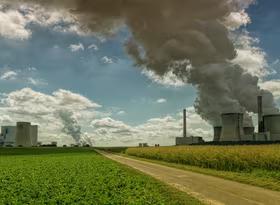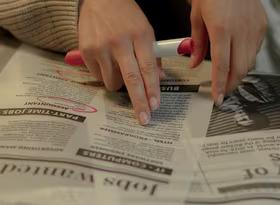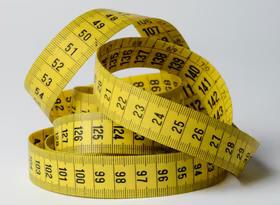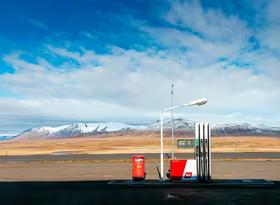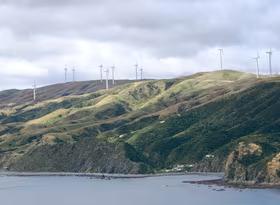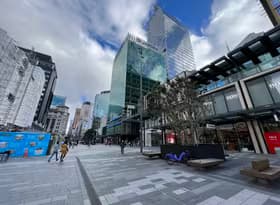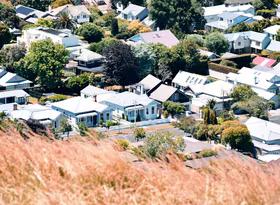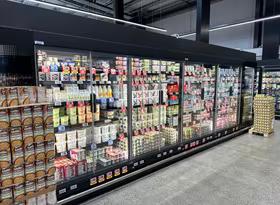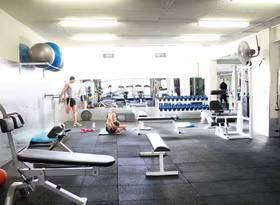Moving towards a circular economy
In its recent advice to government, the Climate Change Commission noted that a more circular economy has the potential to reduce greenhouse gas emissions. Reading this, you could be forgiven for thinking the circular economy is just one part of the decarbonisation jigsaw. But its benefits are much broader than that, and the transition to a circular economy requires a shift in how our economic system operates that is arguably more fundamental than the shift to net zero emissions. So, what is the circular economy, what benefits could it offer, and how do we get there?
A fuzzy description for a fundamental problem
According to the World Resources Institute, humans threw away 300m tonnes of plastic in 2019 (almost equivalent to the weight of the human population), 50m tonnes of electronic waste, and one-third of all food produced. Our waste is costing us money, and contaminating our natural environment. For economic and environmental reasons, it cannot continue unchecked.
The concept of a circular economy has been around for decades. There are several descriptions of what it is. Some descriptions centre on how a circular economy can be achieved such as by designing products to last as long as possible and reusing materials to maximise the efficiency with which resources are used. Other descriptions focus on outcomes such as the minimisation of waste, reducing pollution, and increasing renewable energy generation.
Economists focus on the utilisation of scarce resources, so I prefer to describe the circular economy as trying to use resources as efficiently as possible and minimising waste. When it comes right down to it, much of what we consume we either grow or dig up out of the ground. But there are limits. There’s only so much land available to grow things, and only so many natural resources such as coal, gas, iron ore etc.
And, at the other end of the consumption process, there is only so much waste we can put into landfills, the air, rivers, and the oceans before it starts to materially affect our health and living standards. The circular economy recognises these limits and seeks to offer a way to keep growing the economy and raising our living standards without running out of pasture, coal, iron ore and other finite resources and without continuing to contaminate our land, water, and air with our waste to the same extent.
It’s already happening
One example of how we are getting better at minimising waste is the digitisation of the economy. Remember when we used to buy CDs, DVDs, and video cassettes? All that plastic ended up in landfills. Now that audio and video has been digitised, coupled with streaming services such as Netflix and Spotify, much of our home entertainment is essentially waste-free. And for many of us in New Zealand we can bask in the warm glow of self-satisfaction that comes from knowing that much of the electricity that powers our smart TVs and music players is generated from renewable resources.
Gainers, losers, and changers
The circular economy is a confronting concept. Most business models are about selling more products to more people, so many sectors and their supply chains will undergo a degree of transformation in the transition to a circular economy. Some jobs will be shed, other jobs will be created, and many businesses will need to change their business model.
Gainers
- The recycling sector would be bigger, broader, more effective, and more efficient.
- The repair and maintenance sector would grow as more products are repaired rather than discarded.
- The sharing economy (think ride shares and accommodation sharing) would grow and incorporate a broader range of products and services.
- The renewable energy generation sector would grow.
- There would be opportunities to grow the biomass sector, which uses waste from forestry and wood processing to make fuel (that can be used in industrial heating processes, for example).
- There is much we don’t know about how to recycle products which creates opportunities for research firms. A circular economy would also involve a lot of data capture and analysis to monitor resource use and reuse.
Losers
- The mining sector and associated processing sectors such as oil refining would most likely shed jobs as demand falls.
Changers
- The packaging, manufacturing, construction, and retail sectors would either shed jobs or change their business models to use (or reuse) sustainable resources.
Motor vehicles are a special case. New Zealanders like to hold on to their cars as long as possible, which is why the average age of the New Zealand fleet is much older than fleets in many other developed countries. Repairing and maintaining our cars sounds like good circular economy thinking. But running those inefficient internal combustion engines certainly isn’t. A circular economy would see electrification of the vehicle fleet, and that electricity would be generated from renewable resources.
Scale is important
There are things New Zealanders can do at a regional and national level to contribute to a circular economy, such as minimising the amount of waste going to landfill, growing our renewable energy generation, and establishing biomass supply chains and markets. But with supply chains for most sectors spanning the globe, and sectors such as recycling only profitable when carried out on a large scale, in many ways the circular economy must be considered on a global scale. The good news is that China, the EU, and several European countries such as the Netherlands and Finland are already taking steps.
What policies would support a circular economy?
Setting targets is a good place to begin. It brings discussion about the circular economy into the mainstream, sends a signal to domestic businesses about the long-term direction of government policy, and can act as a catalyst to attract starts ups and like-minded businesses from overseas. In October 2016, the Dutch government launched ‘A Circular Economy in the Netherlands by 2050’ program with specific objectives including a 50% reduction in the use of primary raw materials as soon as 2030 as well as the goal to be 100% circular in 2050. The Dutch government has prioritised five sectors including: biomass and food, plastics, manufacturing, construction, and consumer goods. Additionally, Dutch regions and cities have started to develop and promote circular innovations on more local levels. In its advice to government, the New Zealand Climate Change Commission has called for the government to produce a long-term circular economy strategy.
Raising awareness among consumers about the costs of our current economic system and the benefits of change can be a powerful means of changing business behaviour. The more that circular economy thinking can be brought into mainstream consciousness, and the more it can be seen as a realistic and achievable economic goal, the more pressure consumers will put on businesses (through their purchasing decisions) to change their ways.
Creating hubs where businesses, innovators and students can mingle, research, and try new things. Hubs can also be effective in early identification of administrative and regulatory barriers. The Brightlands Chemelot Campus in the Netherlands is a private and publicly funded community of innovators. Among its inhabitants is a company called DSM-Niaga, which has made a name for itself by recycling carpet, while Vertoro has found success turning paper pulp into fuel for ships.
Subsidies for new projects and innovations can be an effective way for governments to start making things happen in instances where the free market falls short. These subsidies are needed with innovations where the benefits are spread over a large population and are unlikely to be fully recouped by the producer. For example, the Government recently funded five projects to reduce food waste. One such beneficiary is KiwiHarvest, a national food rescue organisation that works with food businesses, including supermarkets, wholesalers, producers, cafes, restaurants, and hotels, to rescue the food that they are not able to sell for redistribution to people in need.
Taxation can be used to provide financial incentives. For example, China has implemented value-added tax (similar to GST) refunds to incentivise businesses to use recycled resources such as tyres, cardboard, and fibreboard during production. The UK has introduced a tax on plastic packaging that has less than 30% recycled content.
Regulation and legislation can support other policies. For example, China has banned imports of most waste types to incentivise domestic recycling. Product standard codes can be changed to ensure products and packaging are made with sustainable materials and built for longevity. Governments can impose moratoriums on, or ban, exploration and development of fossil fuel and other mineral extraction. Local governments can legislate to ensure households and businesses employ better waste separation, and more waste goes to recycling plants rather than landfill.
Infrastructure is needed to manage greater volumes of recycled materials and new supply chains are needed to funnel recycled materials back into the economy. Legislation to support this kind of infrastructure development could be integrated into the current reform of the Resource Management Act.
Public procurement can be a way to directly create circular economy practices. The New Zealand Government has recently committed the public sector to be carbon neutral by 2025. A similar commitment could be made in terms of the resource use and waste management of the public sector. Many private sector companies provide contracted services to the public sector and would therefore need to change their practices to continue to win these contracts. For example, the carbon neutral commitment will incentivise companies that offer fleet management services to the public sector to transition their fleets to electric vehicles. This policy would have the side-effect of increasing the availability of electric vehicles to private sector customers. So, the effects of public sector commitments can be much broader than the public sector.
Skills development is integral to the transition to a circular economy. New industries will emerge, and business practices will need to change. That means new skills will be needed.
Improved data collection can be effective in changing behaviours because good data can be effective in highlighting risks and problems, evaluating performance and charting progress towards targets. Good data supports good decision making by governments, businesses, consumers and investors. Data is needed on business and household resource use and waste. Industry and occupation data classifications need to evolve to incorporate new skills and emerging industries such as biomass, and classifications of existing industries such as waste capture and recycling need to be more detailed to enable more sophisticated analysis of how different types of waste are being reused. New data can be incorporated into official statistics and legislated into company reporting.


